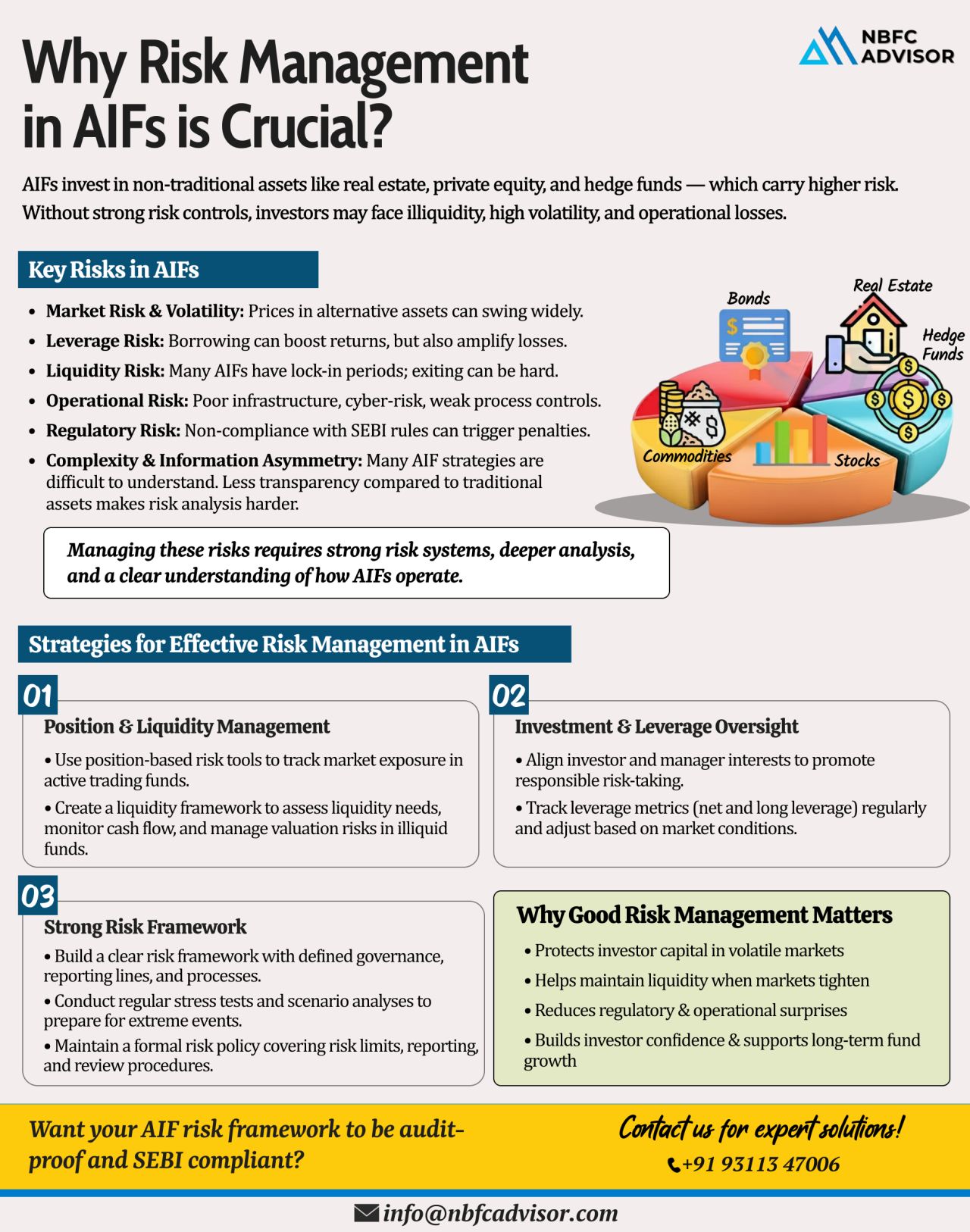Ignoring Risk in AIFs? Even Small Market Shifts Can Create Big Losses
Alternative Investment Funds (AIFs) have become a powerful vehicle for private equity, venture capital, and high-growth investment strategies. But with higher returns come higher risks—and many funds underestimate how fast things can go wrong.
A minor market correction, liquidity crunch, or misjudged exposure can trigger significant losses, reputational damage, and regulatory challenges. For fund managers and advisors, risk management is not optional—it is a survival requirement.
Biggest Challenges in AIFs Today
AIFs operate in a dynamic and often unpredictable environment. The major risks include:
✓ Sharp Market Swings
Volatility in equity, debt, or alternative assets can quickly erode returns and distort portfolio performance.
✓ High Leverage Exposure
Excessive borrowing magnifies both gains and losses. Without monitoring, leverage can threaten fund stability.
✓ Lock-Ins and Liquidity Gaps
Long lock-in periods and illiquid assets make it difficult to exit during downturns or honor investor withdrawals.
✓ Weak Internal Controls
Inadequate systems, poor governance, and manual processes increase operational and compliance risks.
✓ Low Transparency & Complex Structures
Opaque investment structures can hide critical risks from investors, auditors, and even fund managers.
Why Strong Risk Management Is Essential for AIFs
A robust risk framework is the foundation of a healthy, compliant, and trustworthy fund. It ensures:
✔ Capital Protection
Safeguards investor money against unpredictable market movements.
✔ SEBI Compliance
AIFs must follow strict reporting, valuation, and governance requirements. Strong controls prevent regulatory penalties.
✔ Long-Term Credibility
Funds with transparent processes and stable performance attract better investors and larger commitments.
✔ Operational Efficiency
Well-designed systems reduce manual errors and support faster decision-making.
Key Strategies to Manage AIF Risks Effectively
Here are simple, actionable practices every AIF must adopt:
1. Real-Time Risk Monitoring
Track market movements, sector exposure, NAV fluctuations, and portfolio risk daily.
2. Stress Testing & Scenario Analysis
Test how the portfolio reacts to extreme events—even those unlikely to occur.
3. Clear Valuation Policies
Use standardized, SEBI-approved valuation methods to avoid misreporting.
4. Strong Internal Controls
Automate processes, segregate roles, and implement audit trails to prevent lapses.
5. Leverage & Liquidity Limits
Set strict borrowing limits and ensure sufficient liquidity buffers.
6. Transparent Reporting
Provide investors and regulators with clear, timely, and accurate updates.
A well-structured risk system not only protects the fund but also enhances investor confidence.
Conclusion: Risk Ignored Is Wealth Destroyed
AIFs thrive on performance, but performance is built on strong governance, transparency, and risk preparedness. If you manage, operate, or advise an AIF, having a solid and audit-ready risk framework is essential—not just for SEBI compliance, but for safeguarding investor wealth.
Need help making your AIF risk systems SEBI compliant and audit-ready?
We assist AIF managers in building robust risk systems, documentation, controls, and governance frameworks.
📞 Call for a Free Consultation: +91 93113 47006
#NBFCAdvisor #AIF #RiskManagement #Compliance #FundManagement #AlternativeInvestments #PrivateEquity #VC #SEBI

